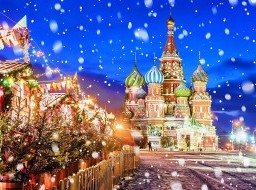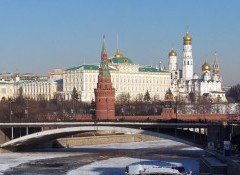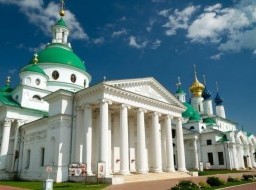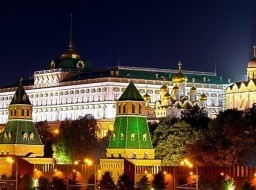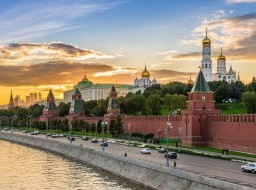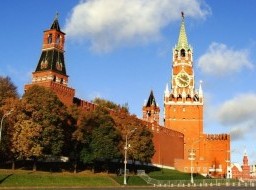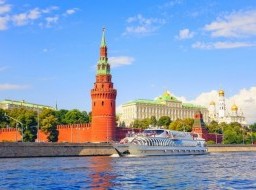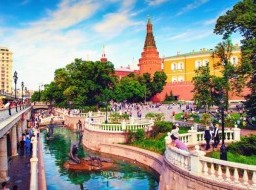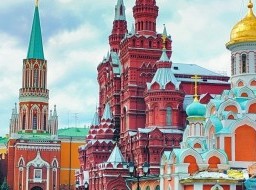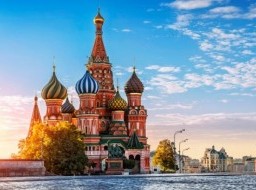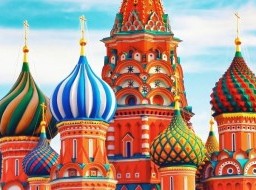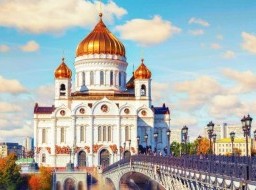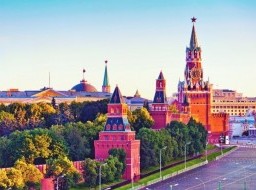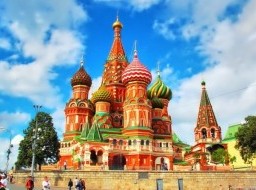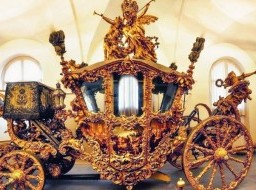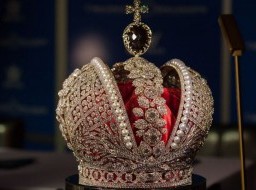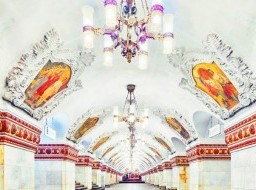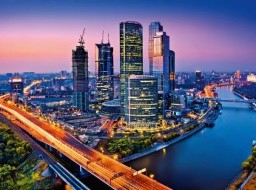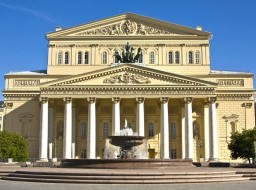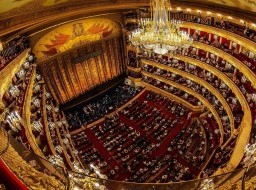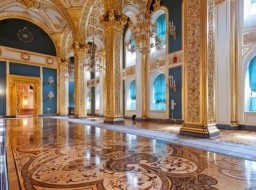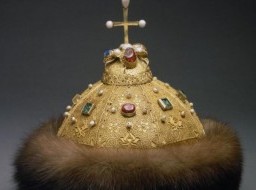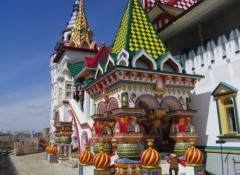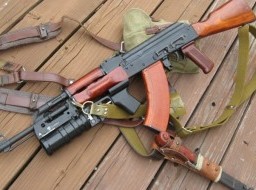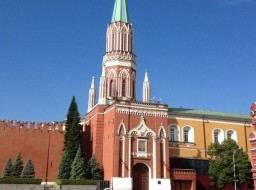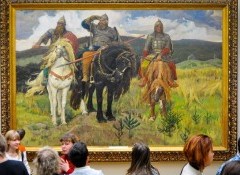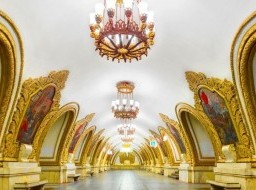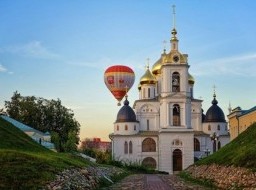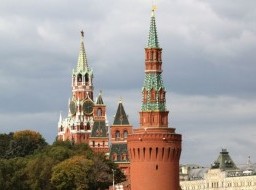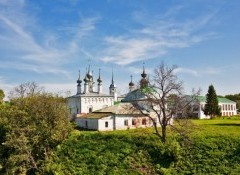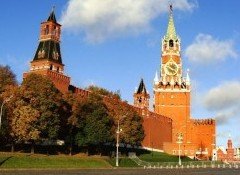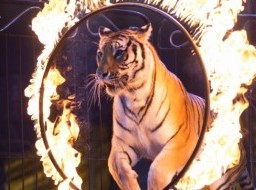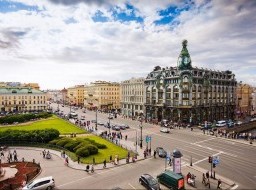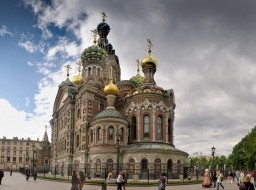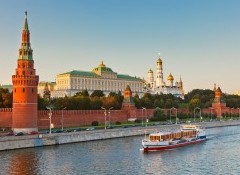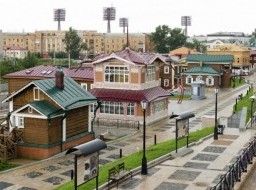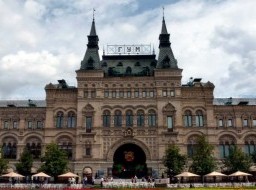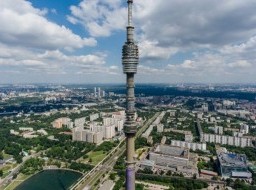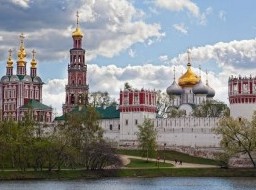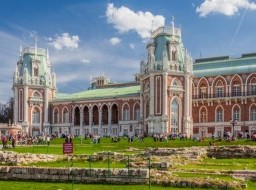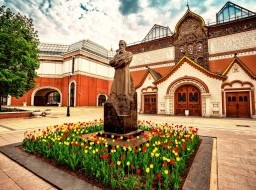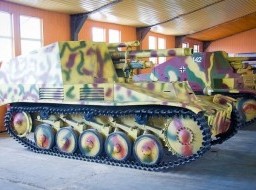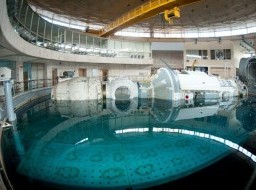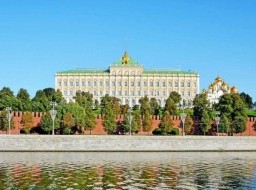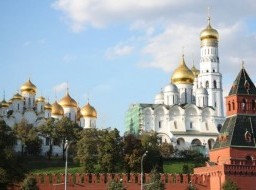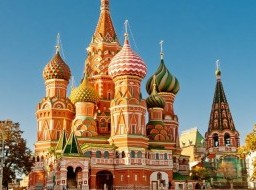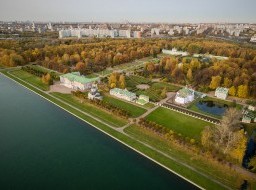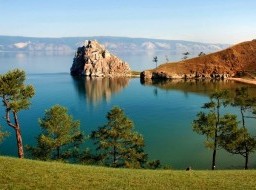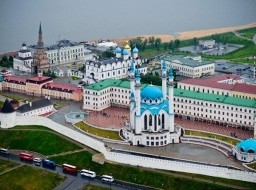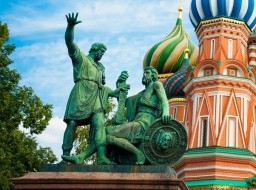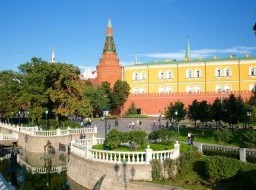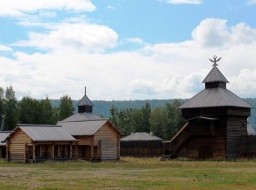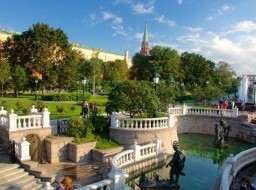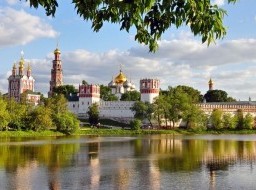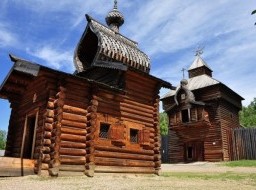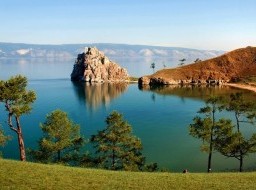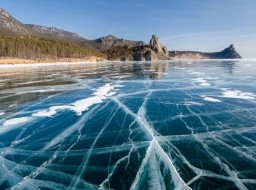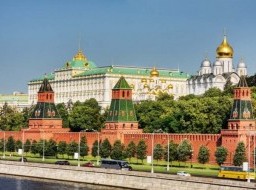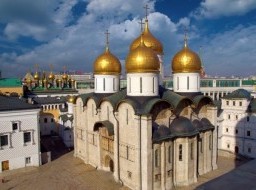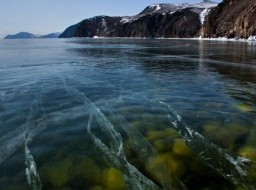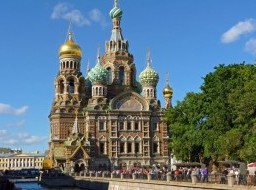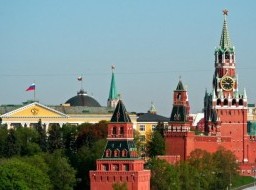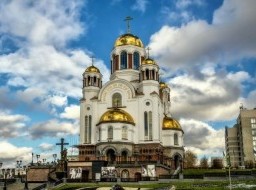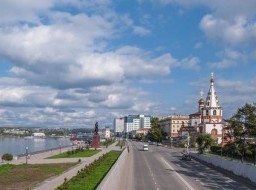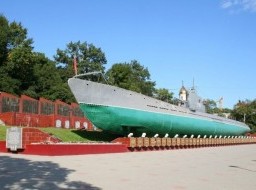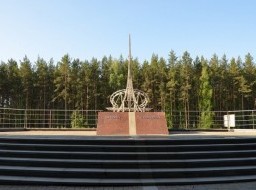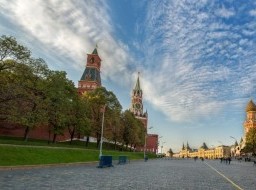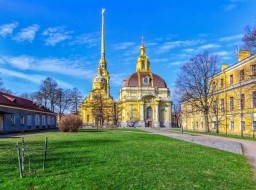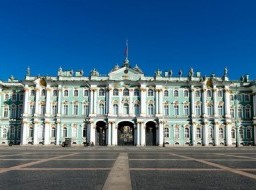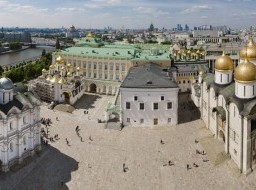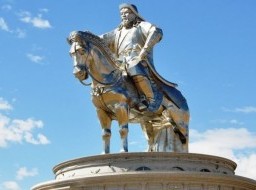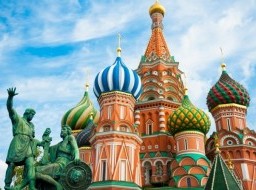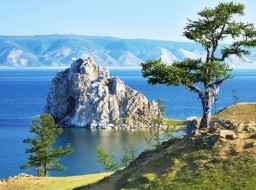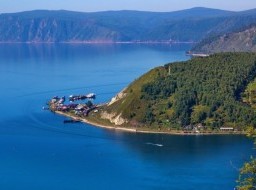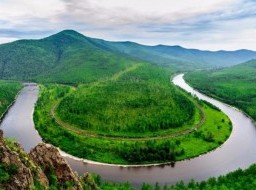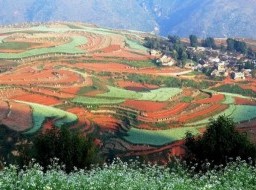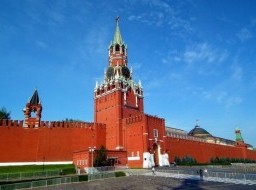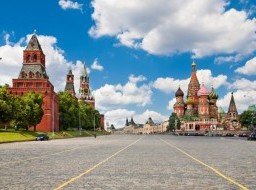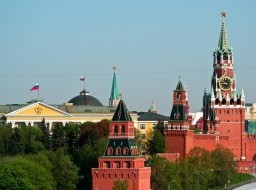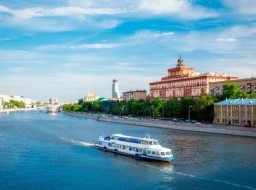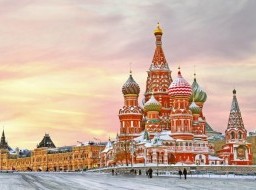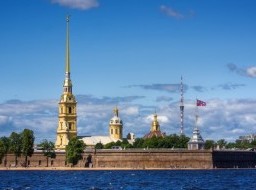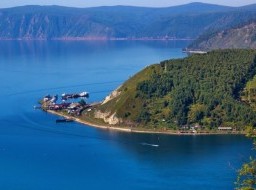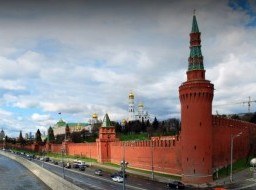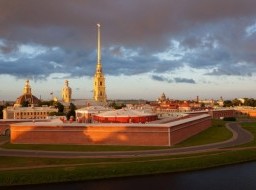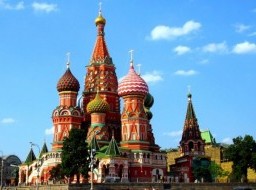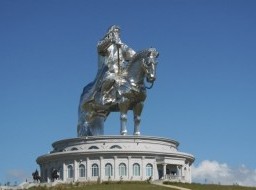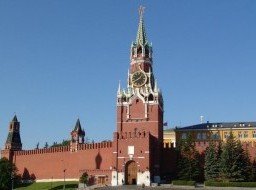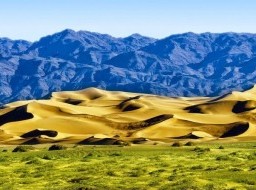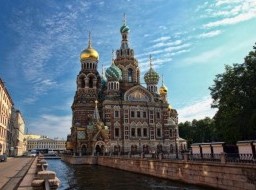The Kremlin
The Moscow Kremlin, the beautiful and ancient ensemble stands high on the hill towering over the left bank of the Moskva river. The Kremlin has always been perceived as a symbol of power and might of the Russian state, the national idea expressed in stone. It is the oldest part of the city, its political, historic and cultural centre, and the seat of the country's highest bodies of power. The Kremlin contains unique specimens of Russian metal casting art - the Tsar Bell (cast in 1733-1735 by the father and son Motorins) and the Tsar Cannon (1586). Besides, it is the site of several museums. Inextricably linked to all the most important historical and political events in Russia since the 13th century, the Kremlin (built between the 14th and 17th centuries by outstanding Russian and foreign architects) was the residence of the Great Prince and also a religious centre. The Kremlin contains within its walls a unique series of masterpieces of architecture and the plastic arts - religious monuments of exceptional beauty such as the Church of the Annunciation, Cathedral of the Dormition, Church of the Archangel and the bell tower of Ivan Veliki, and palaces such as the Great Palace of the Kremlin, which comprises within its walls the Church of the Nativity of the Virgin and the Teremnoi Palace.  The Moscow Kremlin is the best known of kremlins (Russian citadels) and includes four palaces, four cathedrals and the enclosing Kremlin Wall with Kremlin towers. The complex serves as the official residence of the President of the Russian Federation. The name "The Kremlin" is often used as a metonym to refer to the government of the Soviet Union and Russia and its highest members (such as general secretaries, premiers, presidents, ministers, and commissars), in the same way that the metonym Élysée Palace refers to the President of the French Republic, the White House refers to the Executive Office of the President of the United States and Number 10 Downing Street (or simply Number 10) refers to the Office of Prime Minister of the United Kingdom. Although there is evidence of human habitation on the site of the Kremlin dating back to 500 BC, Moscow's history really begins around 1147, when Yuri Dolgoruky, Grand Duke of Kiev, built a wooden fort at the point where the Neglina and Moskva Rivers converge. The Moscow Kremlin, which according to chronicles dates from 1156, contains an ensemble of monuments of outstanding quality. Ever since the establishment of the Principality of Moscow in 1263 and the transfer to Moscow of the seat of Vladimir's Metropolitan in 1328, this was the centre of both temporal and spiritual power. The city grew rapidly and was soon powerful enough to attain primacy among the Russian principalities. At the same time, stone buildings began to appear in the Kremlin and, by the end of the 14th Century, the citadel was fortified with stone walls. Under Ivan the Great, the Kremlin became the centre of a unified Russian state, and was extensively remodelled, as befitted its new status. Meanwhile, Moscow spread outside the walls of the citadel, and the Kremlin became a world apart, the base of the twin powers of state and religion. This period saw the construction of the magnificent Cathedrals of the Assumption, the Annunciation and the Archangel, and the uniquely Russian Terem Palace, the royal residence. The addition of the Ivan the Great Bell Tower completed Sobornaya Square, and added to the imposing effect of the Kremlin skyline. Some of these original buildings border Cathedral Square, others, such as the Nativity of the Virgin, were incorporated into the Great Palace when it was rebuilt. The nucleus expanded northward with the palace of the Patriarchs and the Church of the Twelve Apostles, erected in the 17th century, and especially with the Arsenal of Peter the Great which fills the north-west angle of the enceinte. The triangular palace of the Senate (today the seat of the Council of Ministers) was built by Kazakov for Empress Catherine II in the north-east sector between the Arsenal. Ivan's descendents further developed and adapted the Kremlin complex and, even when Peter the Great moved the capital to St Petersburg, Russia's rulers continued to leave their mark on the medieval town. Peter himself built the Kremlin Arsenal, originally planned as a military museum and now occupied by a barracks, and the 18th and 19th centuries brought Neoclassical masterpieces such as the Senate Building and the Great Kremlin Palace. After the 1917 Revolution, the Kremlin regained its rightful place as the seat of the Russian government, and the legacy of the Communist era is still visible in the large red stars that top many of the defensive towers, and in the vast, modern State Kremlin Palace, originally the Palace of Congresses. The existing Kremlin walls and towers were built by Italian masters over the years 1485 to 1495. The irregular triangle of the Kremlin wall encloses an area of 275,000 square metres (68 acres). Its overall length is 2235 metres (2444 yards), but the height ranges from 5 to 19 metres, depending on the terrain. The wall's thickness is between 3.5 and 6.5 metres. Originally there were eighteen Kremlin towers, but their number increased to twenty in the 17th century. All but three of the towers are square in plan. Most towers were originally crowned with wooden tents. It is surrounded by six buildings, including three cathedrals. The Cathedral of the Dormition was completed in 1479 to be the main church of Moscow and where all the Tsars were crowned. You can see the massive limestone facade, capped with its five golden cupolas. The gilded, three-domed Cathedral of the Annunciation was completed next in 1489, only to be reconstructed to a nine-domed design a century later. On the south-east of the square is the much larger Cathedral of the Archangel Michael (1508), where almost all the Muscovite monarchs from Ivan Kalita to Alexis I of Russia are interred.
The Ivan the Great Bell Tower on the north-east corner of the square is said to mark the exact centre of Moscow and resemble a burning candle. Until the Russian Revolution, it was the tallest structure in the city, as construction of buildings taller than that was forbidden. Its 21 bells would sound the alarm if any enemy was approaching. The upper part of the structure was destroyed by the French during the Napoleonic Invasion and has, of course, been rebuilt. The Tsar bell, the largest bell in the world, stands on a pedestal next to the tower. The oldest secular structure still standing is Ivan III's Palace of Facets, which holds the imperial thrones. The next oldest is the first home of the royal family, the Terem Palace. The original Terem Palace was also commissioned by Ivan III, but most of the existing palace was built in the 17th century. The Terem Palace and the Palace of Facets are linked by the Grand Kremlin Palace. The largest structure in the Kremlin, it cost an exorbitant sum of eleven million rubles to build and more than one billion dollars to renovate in the 1990s. It contains dazzling reception halls, a ceremonial red staircase and private apartments of the tsars. The northern corner of the Kremlin is occupied by the Arsenal, which was originally built for Peter the Great. The southwestern section of the Kremlin holds the Armoury building. Built to a Renaissance Revival design, it is currently a museum housing Russian state regalia and Diamond fund. The apex of Russian political power and once the centre of the Orthodox Church, the Kremlin is not only the kernel of Moscow but of the whole country. It's from here leaders have done their best for Russia. |
|
